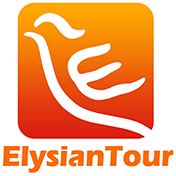Traditional Chinese Festivals
Traditional festivals are the most fascinating highlights of Chinese culture and life. There are four most significant festivals observed in China, namely Chinese New Year, Mid-Autumn Festival, Dragon Boat Festival and Tomb-Sweeping Festival. Most of them are based on Chinese lunar calendar as they are associated with ancient farming lifestyle, and each festival has their unique celebrations and customs. Besides, many ethnic minority groups celebrate their traditional festivals and events as well, such as the Double-Third Day for Miao and Zhuang people, Shoton Festival for Tibetans and Nadam Fair for Mongolians. Below is a list of the major traditional festivals celebrated each year in China, with their fun origins and customs.
Spring Festival, also known as Chinese New Year, is the grandest and most important festival celebrated in China, which is like the Christmas in the west. As it is defined by Chinese lunar calendar, the exact date varies from year to year. The festival falls on the 1st day of the 1st lunar month and concludes with Lantern Festival on the 15th day of the same month. People usually get 7-15 days vacation, and China sees the biggest human immigration on this planet annually by millions of migrant workers traveling home to be with their families.
Traditions and Customs
- Shopping and Cleaning:
- Pasting Spring Couplets and New Year Pictures:
- New Year's Eve Dinner:
- Setting off Fireworks:
- Giving Red Envelopes:
- Watching CCTV New Year Gala:
- Visiting Relatives and Friends:
- Wandering about Flower Market:
Long before the arrival of the Spring Festival, people would have a large shopping spree on the markets to purchase foods, drinks and wears. A thorough cleaning-up of the house would be done as a way of anticipating the new spring.
Pasting the red spring couplets on the door and New Year zodiac pictures on the window is the oldest tradition kept for thousands of years, which forebodes an unfailing wish for health and prosperity.
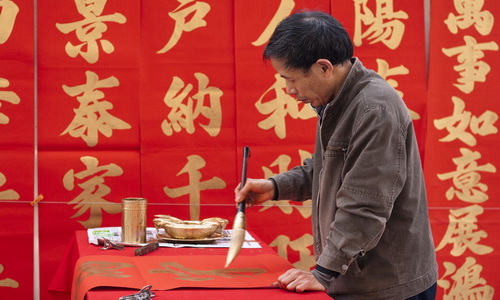
New Year's Eve meal is a holy ritual at peak time of the festival when all the families members get together to feast on a bumper reunion dinner. People from northern cities like Beijing and Xian get used to having dumplings (a symbol of the transition from the old to the new), while southerners may enjoy a full banquet of various dishes varied by regions.
Setting off firecrackers and fireworks is the life-blood of Chinese new year celebration that greatly livens up the jubilant festival atmosphere. However, fireworks are restricted to certain designated areas in urban cities, and most rural towns enjoy a privilege of that.
Children are given lucky money stuffed in red envelopes as best wishes from parents or grandparents. Nowadays, WeChat Red Packets are also presented between friends during the new year.
After the eve dinner, usually most families will watch the live CCTV New Year Gala, the most viewed TV program throughout the year.
On the first day of the new year, people would visit their relatives, friends or neighbor to share the joy and enjoy meals together.
Cantonese and Hong Kong people have a special tradition on the first day, going to the flora market to buy some flowers. Some seniors would also flock to the temples to make offerings as a way to obtain good luck in the coming year.
The Chinese Lantern Festival falls on the 15th day of the 1st lunar month. It is usually regarded as the end of the Chinese New Year celebrations. Traditionally, the Lantern Festival is also a time for family to get reunited, and many fun and wonderful activities are still reserved to celebrate it.
Traditions and Customs
- Eating Yuanxiao:
- Appreciating the Lantern Show:
- Guessing Lantern Riddles:
- Joining in the Dragon and Lion Dance:
Yuanxiao is small dumpling balls made of glutinous rice flour with various kinds of fillings, which the festival is named after. It is a must-eat food to celebrate the festival.
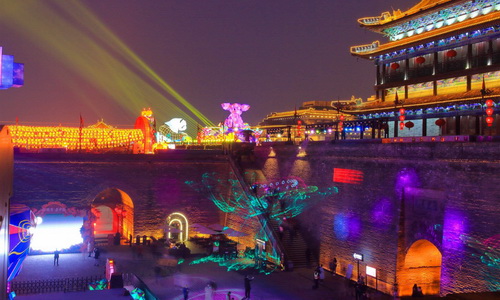
During the Lantern Festival, seeing the lantern show is a great delight when all the markets, parks and storefronts are decorated with brightly-lit lanterns of all shapes, sizes and colors.
Small fun games like riddles themed with Chinese characters are very popular, which could be caught in some communities.
Sometimes, the temples and businesses would held dragon dance in the street and lanes.
Mid-Autumn Festival is a traditional celebration in China that is originated from the worship of the moon in ancient times. It falls on the 15th day of the 8th lunar month when the moon is full and brightest. Similar to Thanksgiving Day in Western Countries, Mid-Autumn Festival is China's second most important festival observed for harvest and family reunion.
Traditions and Customs
- Eating Moon Cakes:
- Gazing at the Moon:
- Climbing the Mountains:
Chinese people are accustomed to having moon cakes along with hearty dinners as the special food for celebration. Meanwhile, mooncakes would be the most popular gifts to present best wishes to relatives and friends.
In Chinese culture, a full moon is the symbol of family unity. Therefore, at night, people would go to the courtyard or rooftop to gazing at moons. There is an old tradition that Chinese admire the same moon to share their lovesickness and homesickness, since people couldn't meet each other in ancient times when a letter might take months to reach.
In some regions, people would go for an excursion to the mountains for farseeing on that day. Actually, autumn is indeed the best time for mountaineering and hiking to take in the beauty of nature.
With a history of over 2,000 years, Dragon Boat Festival, or Duanwu Festival, comes on the fifth day of the fifth Chinese lunar month. As one of the four most important traditional festivals in China, it is widely celebrated in China, especially in China's southern areas. The festival is closely associated with Qu Yuan (340 - 278 BC), a poet and minister of Chu State in Warring States Period. He is a great figure who shows deep cared and dedication to the country by a lot of classic masterpieces like Li Sao (The Lament). He chose to end his life to show his loyalty to the state by drowning himself in the river on the fifth day of the fifth lunar month, and there are various customs to commemorate him.
Traditions and Customs
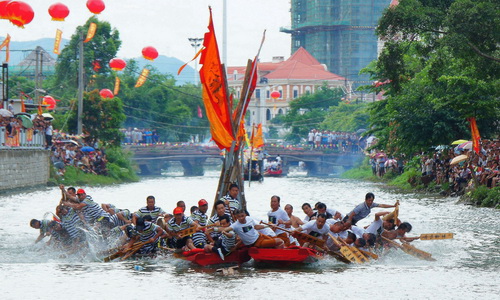
- Eating Zongzi:
- Watching Dragon Boat Race:
Zongzi is a kind of glutinous rice wrapped with reed leaves. The fillings differ in different regions of China. Northern people prefer sweet rice dumplings with red dates while southern people like to have salty rice dumplings with meat.
Dragon boat race is a long-standing tradition popular in any parts of China where you can find a river or a lake. It is a day full of excitement with teams of rowers paddling in unison to the beat of pounding drums to reach the destination first. The best places go for it include Hangzhou Xixi Wetland, Phoenix Ancient Town and Zhenyuan Ancient Town.
Also known as Qingming Festival, Tomb Sweeping Day falls on April 4th or 5th each year. Qing Ming is not only a natural solar term, but also a day for Chinese people offer sacrifices to their ancestors and the deceased. The festival traditions differs slightly from place to place, but tomb sweeping, ancestor worship, and outings are common basic rituals in China.
Traditions and Customs
- Tomb Sweeping:
- Spring Outing:
- Tea Picking:
Chinese people would sweep the graveyard of the deceased and offer some flowers or incense to show their respect and gratitude to their ancestors.
Having an outing is a trendy activity on that day for people to take in the air of the late spring.
It is believed the tea near Qingming festival is the best. You are suggested to plan a tea plantation visit to Hangzhou Meijiawu Village or Yellow Mountain, where you may meet people picking the tea leaves.
Double Third Day
On the third day of the third lunar month in Chinese calendar, the Double Third is a centuries-old traditional festival celebrated by a lot of ethnic minorities including Zhuang, Miao, Dong and Yao. Especially for Zhuang People in Guangxi Province, the Double Third day is the birth date of their ancestor and also a time for carnival.
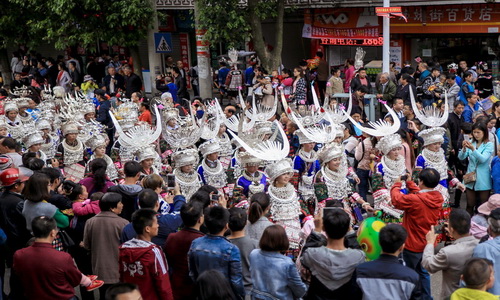
The grandest celebrations for the festival is to participate in the annual singing galas and competitions as well as enjoying fabulous feast. Young men and women dressed in their colorful ethnic costumes take the chance to meet new friends or lovers during the fair.
Shoton Festival
Shoton Festival is one of the biggest religious celebrations among Tibetan festivals, beginning on the last day of the sixth month of Tibetan calendar and lasting for week-long. It is a tradition to mark the conclusion of the Yarné, the 100-day summer retreat of the Tibetan Buddhist monks, when pilgrims would go to the monasteries for praying and offering homemade yogurt to the monks. The Drepung Monastery is the main venue for celebrations, where a giant Thangka of Buddha image would be unveiling across the valley. Besides, another popular custom of Shoton Festival is to go for a picnic of yogurt with families and friends, and enjoy the Tibetan operas and dramas in Norbulinka Park.
Nadam Fair
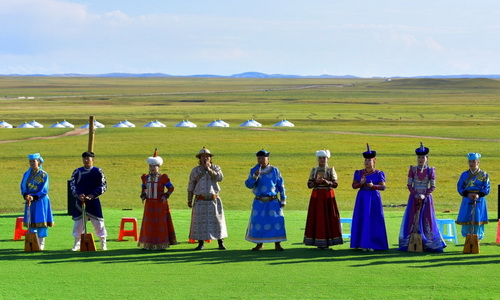
Nadam in Mongolian culture literally refers to entertainment and games, which is the biggest folk event for Mongolian ethnic group. Every year during July and August when the vast steppe turns green, there will be a grand meeting for nomads to celebrate the harvest. Mongolians dressed in their best attires enjoy their days a variety of exciting competitions, such as horse racing, wresting and archery. At night, bonfire parties are held for people to sing and dance together.

